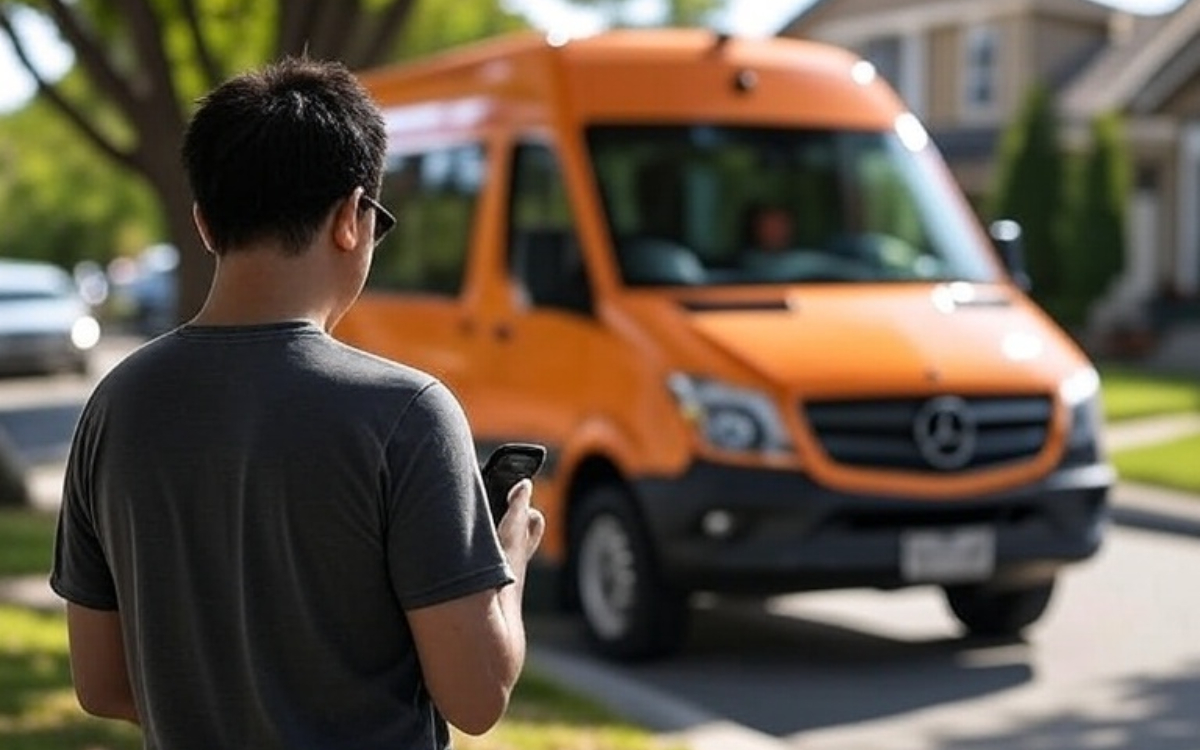


Mobility challenges on business parks

In recent years, Shotl has digitized collective mobility, creating a mobility management system that empowers public transport operators to offer flexible, on-demand bus services. In a very low-density environment, it is a relatively simple system: Users who need to move around residential areas, suburbs, or small towns have the freedom to do so.
Outside cities industrial areas are also an obvious use case. There, having a transport service with fixed routes and schedules that works exactly like a bus in a big city is usually very inefficient and must be heavily subsidized. Also, in business parks, there is usually no place to park during the day and plenty in the evening. In these locations, where parking is scarce and there is not a high density of users, it is much more practical to generate demand induction systems.
On-demand buses more closely serve users’ needs and work practically like a taxi. This induces demand because users no longer have the feeling that they are adapting to an infrastructure that only works during certain hours. Rather, it is the system that adapts to the user’s mobility needs. It works reactively, so that when you intend to travel, you automatically know the waiting, pick up, and drop off times, taking into account historical demand and the possible deviations from the route that may occur along the way. The experience is centered on the user and, in this way, we can get private vehicle users onto shared transport systems.
One such use case was implemented by Shotl for Munich airport workers. We replaced a fleet of 70 company vehicles with just three shuttle vans operated by airport personnel that drove staff between terminals, cargo buildings, offices, etc. (more information here). Also in Germany, Shotl successfully deployed a 15-vehicle on-demand operation in the city of Wolfsburg, which, after all, functions as a huge business park. These examples prove that mobility in industrial areas can be very well orchestrated with just a few vehicles that are available to everyone.
And how can we capillarize business parks with cities? In these areas, we no longer find just factories or companies; nowadays, all kinds of services are located there, from gyms to shopping centers, making them a true extension of the city. So, it is more necessary than ever to change the mobility model to make it less dependent on private vehicles.
The answer lies in data. Enormous quantities are collected every day, and it is necessary to analyze it to see how it impacts people's lives: access to jobs, education, healthcare, etc. In the mobility sector, everyone is trying to change the model but, while there are many new companies appearing, data needs to be shared to benefit everyone. Because, even though there may be market segmentation, there cannot be demand segmentation. And this concept is what is really going to revolutionize the transport model.
Popular posts
25.01.21
8 Mobility Predictions for 2021
Let’s face it, we’re all hoping 2021 will be an improvement on 2020! And while we’re going to be living with the virus and its effects for some time, at Shotl we see good things ahead for mobility.
Osvald Martret
24.12.18
Shotl at the 2018 Fleet Europe Summit
On November 28th, Shotl co-founder and CCO Gerard Martret spoke at the Fleet Europe Summit which was held at Palau de Congressos de Catalunya in Barcelona.
Gerard Martret
25.09.25
Hybrid Route Service: Combining Fixed Lines with On-Demand Stops and GTFS
On-demand bus services can sometimes reduce ridership on fixed routes, particularly if they serve similar areas or times. This phenomenon, known as 'cannibalization', can affect the sustainability of fixed routes. Shotl's Hybrid Route Service is a new


